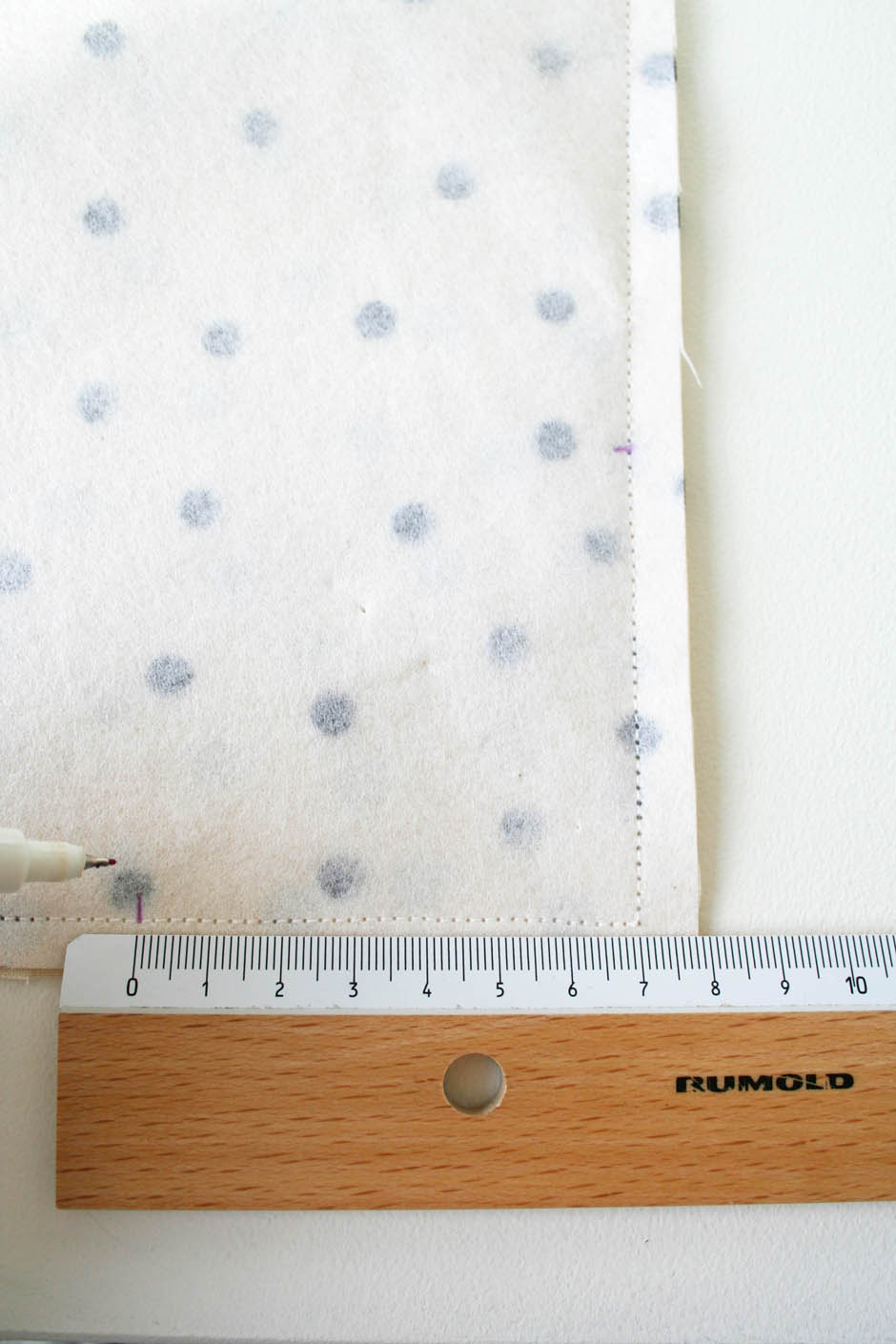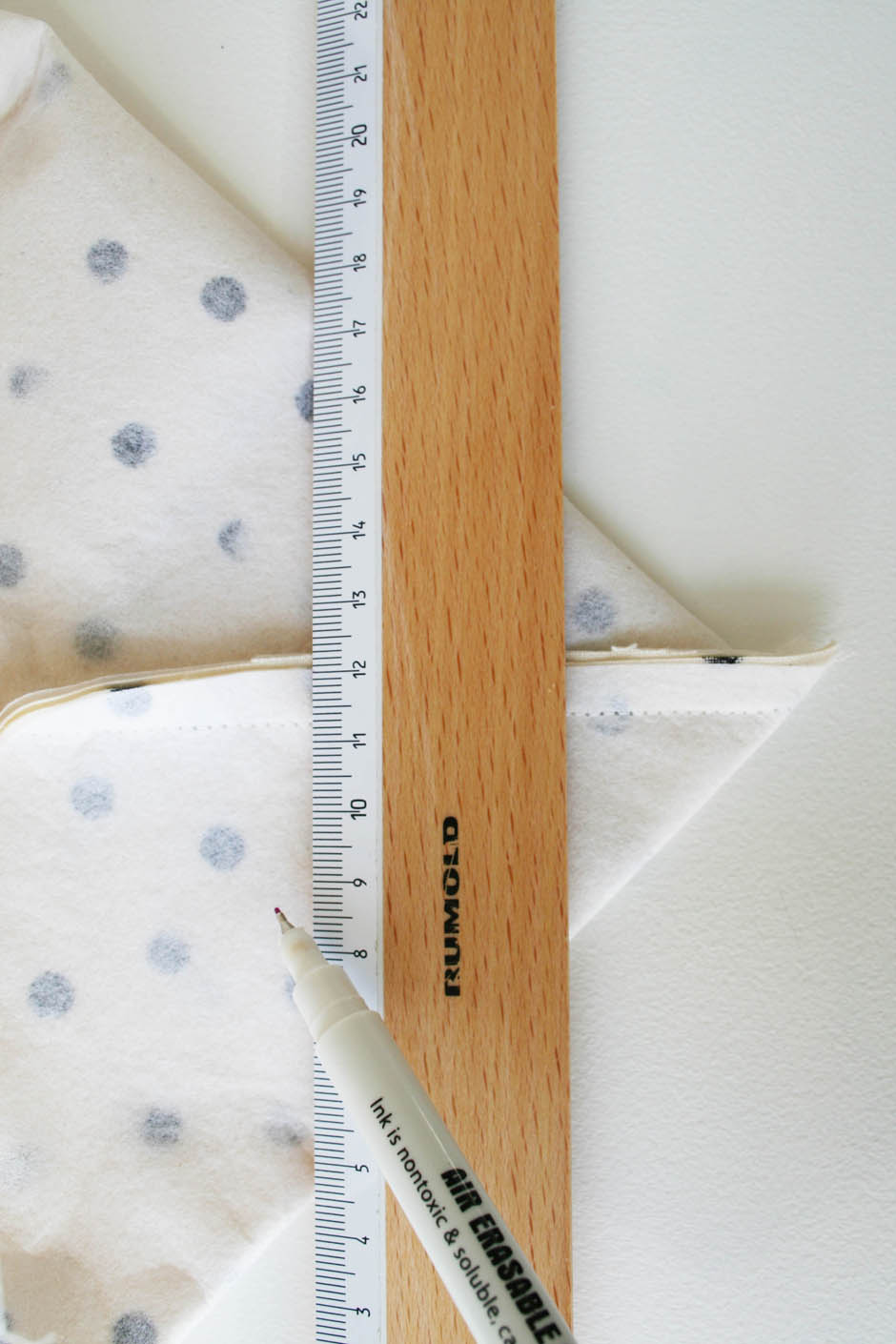This was such an enjoyable sewing project to do for Love Sewing magazine and I’m really pleased to be able to share it here with you today. These fabric buckets are quick and easy to make and useful for all sorts of purposes whether in the craft room, as plant pot covers, in the nursery or bathroom.

You will need:
Two pieces of calico for outside of bag 40 (h) x 30 (w) cm (I bought unbleached calico from Homecrafts)
Two pieces of heavy weight interfacing 40 (h) x 30 (w) cm
Two pieces of lining fabric 40 (h) x 30 (w) cm – I used Koi Cloud fabrics, Smile and Wave print
Ruler and fabric pen or chalk to make and mark boxed corners
Tape measure and scissors to cut pattern
Black fabric paint and pencil with round eraser tip to print calico (I used Dylon black fabric paint)
Plastic sheet to protect table whilst printing calico
All seam allowances are 1cm.

Dimensions for the other sized fabric buckets:
Finished large bucket (pictured filled with wrapping paper) 40 x 35 cm – use 50 x 38 cm pieces of fabric and interfacing. Measure the boxed corners 10cm from corner.
Finished small bucket (pictured filled with embroidery flosses) 28 x 22 cm – use 34 x 26 cm pieces of fabric and interfacing. Measure the boxed corners 6cm from corner.
Finished extra small bucket (pictured filled with paint brushes) 16 x 14 cm – use 24 x 18 cm pieces of fabric and interfacing. Measure the boxed corners 4cm from corner. The gap in the lining should only be 7cm.
Tutorial:

N.B. Instructions are for the medium 32 (h) x 26 (w) cm fabric bucket (pictured filled with balls of string).
Step 1 -Personalise the calico by hand printing polka dots using the eraser tip of a pencil. Protect your table with plastic sheeting (or use a bin liner). Dip the eraser into the paint and print onto fabric, making sure you press firmly and that all of the eraser comes into contact with the fabric. Print polka dots – no pattern is necessary, just random spots look great. Follow the instructions on your paint to fix the colour. This really is as easy as it looks!

Step 2 – Attach the interfacing to the calico pieces by following the manufacturer’s instructions. I used iron-on heavy weight interfacing to make it as rigid as possible so the bucket will stand on it’s own.
Step 3 – Place the the two calico outer pieces right sides together and sew the two sides (40cm) and bottom (30cm).
Step 4a – Make boxed corners. Measure 7cm from the corner seam (don’t measure from the edge of the fabric) in both directions.
Step 4b -Pull out the sides of the bucket and line the marks up.
Step 4c – Draw a line across the corner and sew along the line (I do a double row of stitching to strengthen).
Step 4d – Cut off corner and repeat on the other side of the bucket. Press seams out and turn the bucket right sides out.

Step 5 – Place the two pieces of lining fabric right sides together and sew the two sides (40cm) and bottom (30cm), but this time leave a 10cm gap in the middle of the bottom pieces.

Step 6 – Make boxed corners by repeating step 4. Press seams out but don’t turn the lining rights sides out.
Step 7 – Place the calico outer inside the lining i.e. the right side of the calico outer should be next to the right side of the lining. Make sure you line up the seams and boxed corners. You also need to line up the top edges of the lining and the calico bucket.

Step 8 – Sew the top edges of the lining and the outer bucket. Cut away any seam allowance.

Step 9 -Gently pull the outer bucket through the 10cm gap in the lining.

Step 10 -Top stitch the 10 cm gap closed.

Step 11 – Press the top edge of the bucket and topstitch all the way round. Turn over as much or as little of the top of the bucket as you want to and the buckets are fully reversible if you fancy a change.




If you do make them I’d love to see a pic! I’m definitely going to do more fabric printing – it’s quite addictive once you start.
Katy x






































